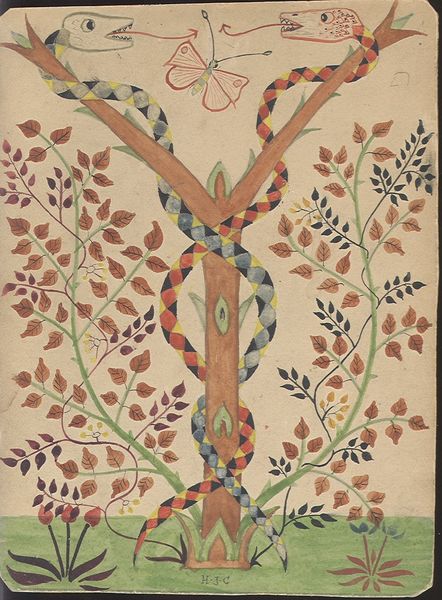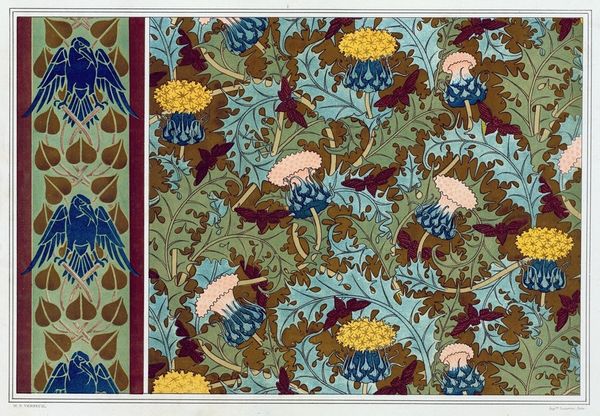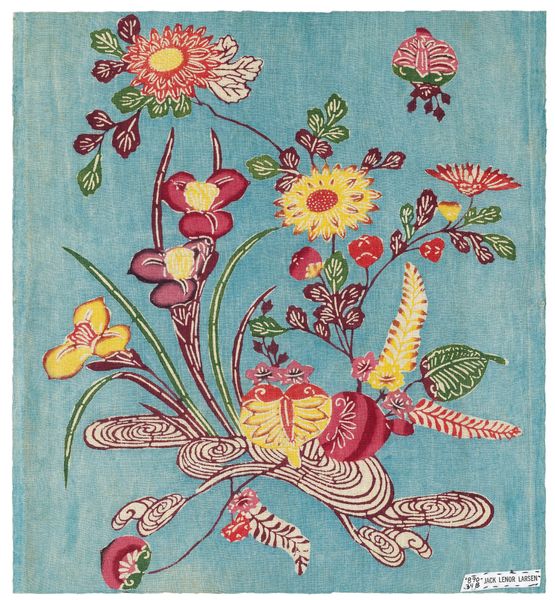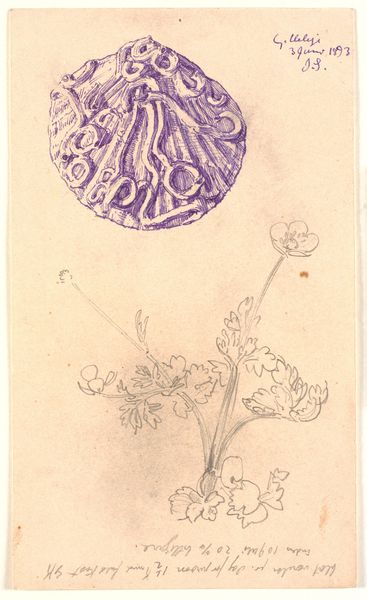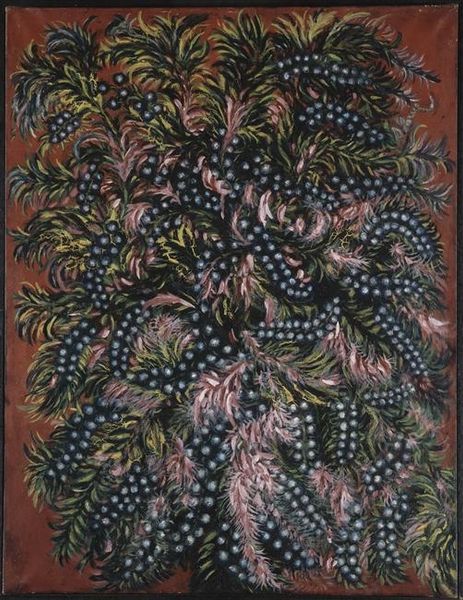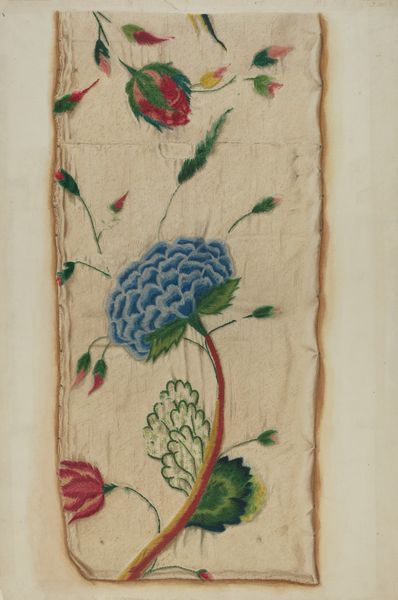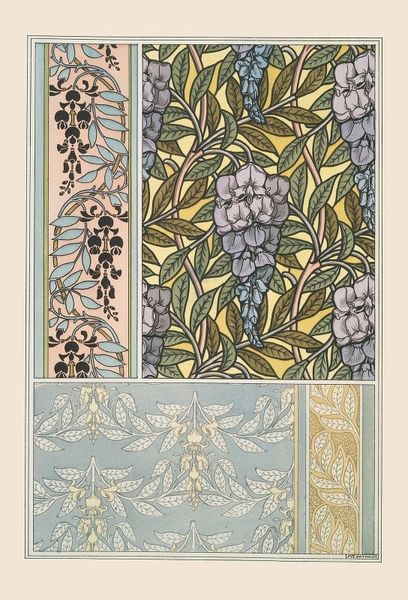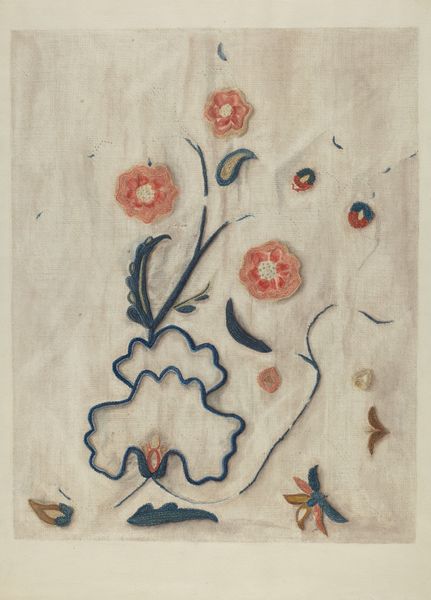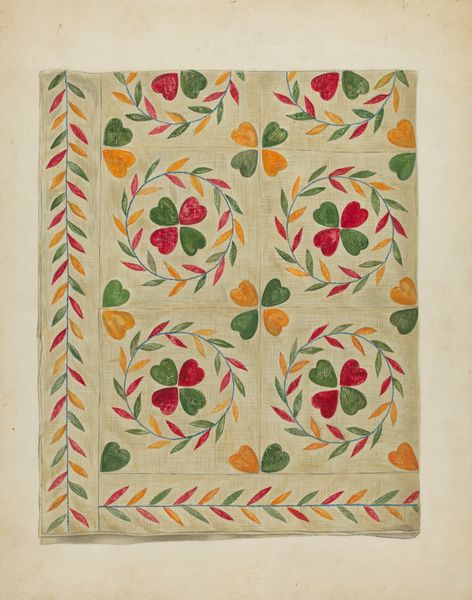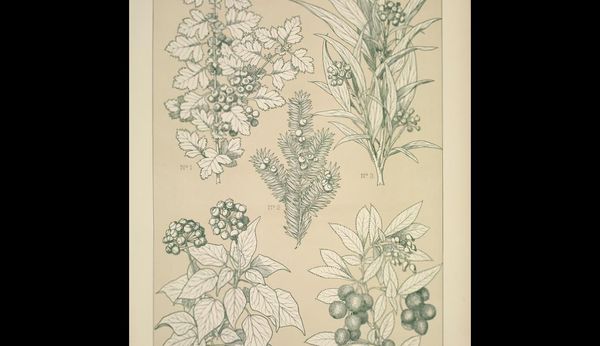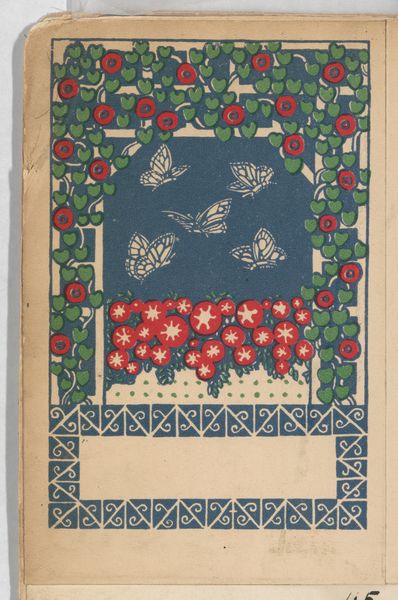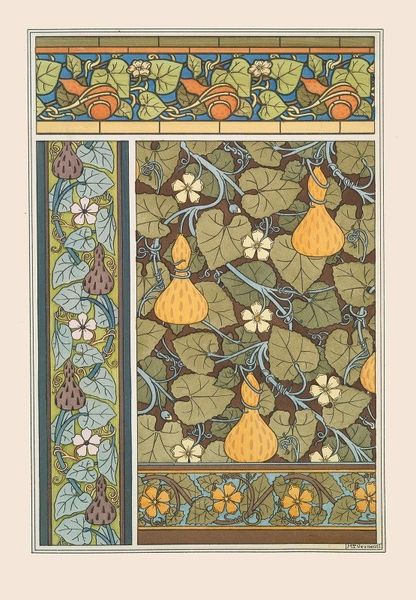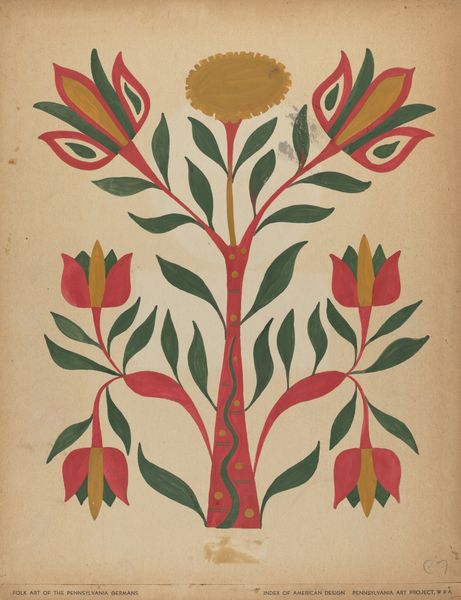
Grape-Vine, from an Eleventh-Century Mosaic in the Ceiling of the Vestibule of the Church of Saint Mark at Venice c. 1876 - 1877
0:00
0:00
Dimensions: 14.2 x 12.5 cm (5 9/16 x 4 15/16 in.)
Copyright: CC0 1.0
Curator: This is Charles Herbert's "Grape-Vine, from an Eleventh-Century Mosaic in the Ceiling of the Vestibule of the Church of Saint Mark at Venice," currently housed in the Harvard Art Museums. Editor: It feels light and airy, almost like a botanical illustration, but with this slightly muted, antique palette. Curator: It's crucial to remember that this isn't just a drawing, but a study of a mosaic. Herbert is documenting a much older work, recontextualizing it for a new audience. How does this reframing impact our understanding? Editor: It makes me think about cultural appropriation, the layers of interpretation. What did the vine symbolize in the original mosaic, and what does Herbert's representation mean for us today? Curator: Precisely! Consider the vine as a symbol of abundance, or even communion, within the socio-religious context of 11th-century Venice versus Herbert's Victorian era documentation. Editor: I see the image differently now—less about botanical beauty, more about the politics of preservation and representation. Curator: A perfect example of how historical context and contemporary theory enrich each other, wouldn't you say?
Comments
No comments
Be the first to comment and join the conversation on the ultimate creative platform.
